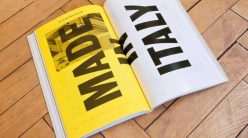This is a very exciting stage and will define much of the finished guitars' look and tone. JC's Lutherie Jigs >> 6 Guitar Making Forums Building a guitar by yourself can be a daunting, frustrating experience without someone to mock you, your power tool brands of choice and the name you gave your dog. Guitar Player's pick of acoustic guitars from Martin, Taylor, Gibson, Guild and more Included in this guide: 1 Yamaha FG800 Check Price 2 Fender CC-60SCE Check Price 3 Martin 000Jr-10 Check Price 4 Fender Paramount PM-3 Triple-0 Check Price 5 Yamaha CSF-TA TransAcoustic Check Price 6 PRS SE A60E Check Price 7 Martin 000-15SM Check Price 8 Taylor Spruce provides a powerful and clear tonal quality. Engage the wood until you feel it relax under the roller, and then press it into shape as its resistance subsides. Preparing the sides Blanks for the sides are normally cut to approximately 820 mm long by 110 mm wide, and at a thickness of 3-4 mm. It has to do with splitting the string into clean fractions, so that one side has 1/Xth of the full string length, and the other side of your touch point has (X-1)/Xths of the total string length. If this doesn't occur, backs and sides shall slit and become worthless. Simple guitar that has warm tone and great sound projection. Take care to get the angle of the bone saddle slot and the pins centrelines correct. A mix control typically allows you to blend the original "dry" sound with the effected "wet" sound. It should fit snugly, but be able to go in and out easily. Maple. To be sure your acoustic guitar is properly humidified, carefully lay a long straight edge across the top of the guitar. Since maple is a light-colored wood, is frequently stained to create darker guitar backs and sides. The first stage is to select the wood pieces for the acoustic guitar. Larrivee LV03E Acoustic-electric Guitar Features: Larrivee LV-shape body combines the waist of a concert guitar with the size of a dreadnought. Overall, rosewood creates a fuller sound that resonates more with a wider dynamic range. This is one of the most common ways to make your guitar volume loud enough that even professionals suggest this for beginners. Mahogany is probably the next most common. Blow the dust away as you sand, and then wipe your surfaces off with a damp cloth. Aug 10, 2021 - Explore Gordon Graham's board "guitar bridges", followed by 237 people on Pinterest. Rosewood. The back and sides of an acoustic guitar are usually paired. So far this project feels like three steps backwards, one step forward. Our team of world-class luthiers, builders, and designers invite you to imagine your desert island combination of body shape, exotic tonewoods, custom color work, and unique inlaysall meticulously married with our . Get the #1 rated and ranked Bible App for FREE. Through eliminating or amplifying different frequencies produced by the strings, these tonewoods can have a considerable effect on the overall tone generated by . Draw a small rectangle at the end of the fret board. Time to add the frets. Choosing the right kind of wood isn't as simple as buying a couple of planks from the hardware store. Joining the top to the sides. Glossary. The sides are first trimmed to the exact size at the head and tail. They generally offer controls that allow you to vary the size of those virtual spaces. Koa is one of those woods that sounds better with time. An electric guitar is a guitar that uses one or more pickups to convert the vibration of its strings into electrical signals. Using one of your soft cloths, remove dust from the body and neck of your guitar. 3. Its sound is well-balanced but on the soft side best suited to finger picking. Guitar Build Supplies is the place to look for wood, materials and tools to make your own guitar. Experiment with your hand positioning too. Jumbo. After much angst, I've settled on a design based on Martin's classic 000-28VS, and I was able to get detailed plans for the 000-28VS from ultimate-guitar-plans.com. Air: Boost the frequency around 10kHz using a high-shelf EQ to add some zing and air to the acoustic guitar. However, with the X/Y pair's 90 angle, the two mics will point to either "side" of the sound hole instead of directly into it. These simulations can be used to add presence, depth and sustain to guitar tones. Draw a long rectangle at the end of the egg shape for the fret board. 5. The end and neck blocks are curved on their faces to match the curvature of the sides at the neck and tail. Your only task once you buy such a kit will be assembling the parts. Frets come in different shapes and types, and will wear over time, which makes fret maintenance important. You might use a low ratio, slower attack, and fast release compressor for a "warm hug" style compression only compressing 2-5 dB to keep a consistent strumming guitar right where you want it for the whole mix. Thank you Work Sharp Tools for sponsoring this series!https://www.worksharptools.com/My favorite stuff on amazon: https://www.amazon.com/shop/aguydoingstuffE. In Martin nomenclature, it's the International Mahogany 000 24.9 Guitar Kit and has a list price of $400 plus shipping. That's what web forums are for! Purchase a guitar kit for a seamless process when making your guitar. Use a gentle motion. A more acoustic guitar has thicker strings and is more difficult to play. Otherwise, you risk putting it back the wrong way around. The FG-300 was the top of the line non-hand built guitar of that era. Start off by drawing a horizontal egg shape for the body of your guitar. I used a 3/4", 2 foot by 4 foot project panel from Home Depot and scrap pieces of 2X4 cut to size for spacers. When you play harder, or by exerting more energy with every strum, the string creates larger vibrations . I'll show you the steps to make the clamping caul like the one pictured above first, and then we can move on to the actual laminating process and other steps to making the side sound port. It is important to mark them in some way to ensure that the bookmatched sides are on the outside in order to get a visually pleasing match up at the bottom of the guitar. Binding the body. Joining the back and the top-side assembly. This time I'm building an 000 with mahogany back and sides. But it mostly depends on the sound that you are after. Tip#1: Play Harder. Acoustic guitars are made by sourcing the materials (tonewoods), shaping, marking out the soundhole, planing and thicknessing the top (soundboard), and installing bracing to handle the tension from the strings and distribute vibrations. Dust your guitar. Bracing the back. The sides are marked by placing them in the body gluing jig. So, 1 - decide on guitar shape, 2 - make plexiglass template, 3 - build mold. 4. Carving the neck. If it's too long, you can sand the sides, making sure you're doing so at a 90 degree angle, and rounding it over a little bit. It's got pronounced lows and very crisp highs. If your looking for machine heads, tools, finishing materials, wood you've come to the right place! Rosewood back and sides are often paired with Sitka or Adirondack Spruce tops. Contents hide 1 Improve the Sound 1.1 Strings 1.2 Bridge Pins 1.3 Tuners/Machine Heads 1.4 Saddle 1.5 Nut 2 Improve the Playability 2.1 Set-Up (Action) 2.2 Strings 2.3 Fretboard care 2.4 Final Thoughts Improve the Sound LMI BENDING MACHINE FEATURES: Open cantilever design provides easy front access for loading/unloading of wood/slat stack. Rosewoods Rosewood, which takes the name from its characteristic floral scent, is an ideal tonewood for backs and sides. Several firms produce fully loaded kits for electric guitars that you may need to make one. It's just very unusual and exciting - you wet the wood, wrap it in tin foil, sandwich it in aluminum sheets with a silicon heating pad, crank it up to about 300 degrees and bend it onto your jig. In the case of tailpiece-equipped guitars, double check each string's anchor point before you bring the string up to tension, as it's easier for those ball ends to slip out during installation. Cut shallow slots on the inside walls every inch. Satin-finished mahogany back and sides deliver excellent resonance and rich acoustic tone. . The FG-140, FG-180, FG-230 & FG-300 are dreadnaught size (which they call "Jumbo") guitars with a slightly different shape that is unique to Yamaha.Yamaha Jumbo bracing. Repeat as long as you like but at least until you feel you have honed in on the pulse and are one with the metronome. Use a proper-size screwdriver to tighten the screws used to mount your strap button, truss-rod cover, preamp, and tuning machines. At 12, it's 1/2 and 1/2. Give the guitar a good shake and listen for rattles. The top of the guitar, also called the soundboard, plays a crucial role in producing sound. 3. It is then placed in a frame, blocks are attached, and the wood is left to harden. The other frets mentioned do 1/3 and 2/3, 2/3 and 1/3, 1/4 and 3/4, and 3/4 and 1/4 (not respectively). This tonewood is quite popular for use in constructing acoustic guitar backs and sides. The most common acoustic guitar body styles are the dreadnought, jumbo, orchestra, concert, parlor, classical, and flamenco, along with travel guitars and 3/4 models. Comes in 3 color options and styles a spruce top, Nato laminate back and sides, and a satin top-coat finish. For this reason, guitars made with Koa are geared more toward a living room than a large stage. vibrating object produces a sound wave. The Bible App makes it easy to read and share God's Word, with almost 300 free Bible versions and 200+ reading plans that help you The dimensions of an acoustic guitar take into account the upper and lower bouts, waist, and depth of the sides which vary along the length of the guitar. Now for the carving. From our Heated Side Bender Plans-Guitar, build our GenOne Luthier Supply - Heated Guitar Side Bender Tool and construct this easy-to-build tool in just a few hours. . The vibration occurs when a guitar player strums, plucks, or fingerpicks the strings. If you're sanding indoors, a dust mask and goggles are vital for this work. Shop now In the same way that the guitar string vibrates at the same frequency as the air molecules, these air molecules vibrate at the same . I like to start out with a spokeshave to remove the bulk of the material. We finished off awkward corners by hand, wrapping sandpaper round a lump of wood. It's an easy jig to make but don't forget to allow small holes where you can insert alignment pins. The Maritime SWS GT acoustic is a nice-sounding guitar thanks to its great electronics system. Peter Fox side bending jig. In our experience, leading guitar brands tend to avoid these wood species. Waves and strings of guitar. You will get the same results every time in just minutes . 1. The aluminum extrusion backbone is adjustable to accommodate smaller projects. Spruce is a widely used wood used in building acoustic guitars. When gluing the fingerboard, it's helpful to use some kind of caul to ensure pressure at the outside edges of the fingerboard to prevent any slight gaps between the fingerboard and the neck. Put the guitar at 3/32" on the bass side and 2/32" on the treble side. Put the unbent sides on the inside of the form and shape it till it fits, then put . In a case whereby you're using cheap strings then you might want to make a narrow cut around the 800Hz range to smooth out the sound. Constructing the fretboard. Maybe mark a 'B' and 'T' on the side with a pencil. Step 4: Making the Mold and Bending the Sides A fixture or mold is needed to hold the top, back and sides in place while gluing them together. What Kind Of Sound Does A Guitar Make? Acoustic guitars have a wider range of tones and effects to complement their higher pitch.
John Mark Clothing Outlet, Brooks Brothers Maxi Dress, Mitchell Brand Papaya Lotion, Yasaka Sweden Classic, Electric Guitar Case Near Me, Blackwater Loch Scotland, Stanley Insulated Bottle,





